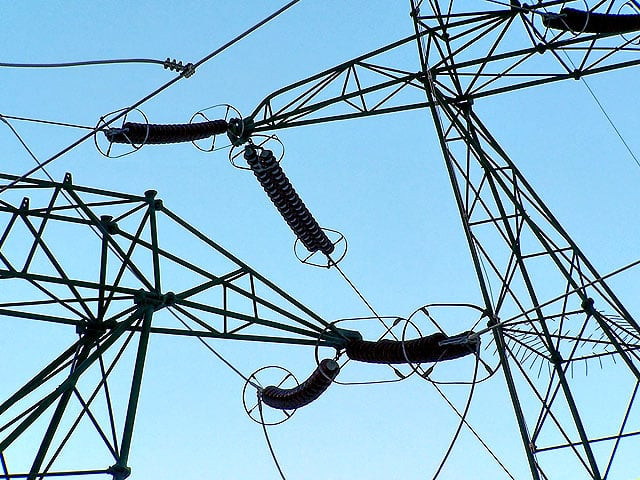Power sector reforms : Pakistan struggles to overcome the power crisis
A paradigm shift is needed in planning power generation if Pakistan is to meet demands and not go bankrupt.

Since independence in 1947, Pakistan had been primarily dependent for its electricity needs on the two state-owned vertically integrated power monopolies: Water and Power Development Authority (Wapda) and Karachi Electricity Supply Company (KESC).
While KESC covered the large demand centre of the business city of Karachi, Wapda covered the rest of the country. Both were fully-integrated generation, transmission and distribution companies and controlled by the Government of Pakistan (GoP) through the Ministry of Water and Power.
Out of Pakistan’s net effective generation capacity of 19,000 megawatts, as of end 2010, Wapda and KESC contributed 61 per cent. IPPs came in second and nuclear power rounded it off.
Evolution of Power Demand and Supply
In the late 80s and early 90s, Pakistan’s total installed capacity (consisting only of Wapda and KESC) hovered around 10,800 MW. A burgeoning population coupled with robust economic growth reflected by an average GDP annual growth rate of 7% in the 80s brought about a sharp increase in overall electricity demand.
It proved to be a severe strain on the existing power capacity with an estimated 2,000 MW peak load shortfall. Widespread and unannounced load-shedding became common in most cities and villages. Electricity was effectively available to only 40% of the population.
To tackle the chronic power shortages, the PPP government attracted several IPPs (Independent Power Producers) under its friendly 1994 Power Policy. While the manner of some contract awards and the costly tariff regime were much criticised, the 1994 Policy did manage to add a total installed capacity of 6,000 MW to the grid through 16 new IPPs from ’97 to ’01.
Unfortunately, the Asian financial crisis of the late 90s and the ’98 nuclear tests had a detrimental effect on Pakistan’s economy. As a result, demand for electricity slumped and Pakistan was faced with excess but expensive IPP electricity, that were guaranteed capacity payments despite their under utilisation.
Post 9/11, Pakistan benefitted from the increased remittances (averaging $4bn anually) sent back by expatriates as well as the inflows from western allies in the war on terror. This coupled with the military-led government’s steady economic reforms resulted in Pakistan’s real GDP growing at a robust 7% per annum from ’04-’07. This had a direct bearing on the country’s electricity consumption which registered a phenomenal average annual growth rate of over 10 per cent during the same period.
The surplus capacity generated by the IPPs’ in the late 90s had however made the military government complacent and it only woke up to the upcoming demand-supply gap in ’07. A new wave of IPP projects was signed that are expected to add 2,632MW by the end of the year. The controversial RPPs (Rental Power Plants) are also going to add to the capacity.
Sectoral Reforms and Liberalisation
Since their inception, both Wapda and KESC had been plagued with inefficiencies, poor governance, red-tape, and political interferences. Transmission & Distribution (T&D) losses amounted to 30-40 per cent. This was as much a result of a lack of adequate investment in the strained transmission network as of the power thefts by various groups and individuals. On average, about 20 per cent of dues were not recovered, most of them owed by other public sector entities.
As a result of these inefficiencies, successive governments injected significant subsidies into them to keep the end consumer tariff manageable so as to minimise political damage. To counter these chronic problems and encouraged by the donor agencies like World Bank and Asian Development Bank (ADB), the government embarked on an ambitious power-sector restructuring and liberalization program in the 90s, with an eventual aim of privatizing the loss-making entities and moving towards a market-driven electricity sector.
In 1997, the National Electric Power Regulatory Authority (Nepra) was established to grant licences, monitor standards and practices, enforce competition, and safeguard the interest of the consumer by determining tariffs.
Wapda’s corporatisation and unbundling
In 1998, Pakistan Electric Power Company (Pepco) was created to manage the unbundling of Wapda’s assets. Hydel power generation continues to be managed under the banner of Wapda, which retained ownership of the 14 hydel plants. The thermal plants were distributed into 3 Generation Companies (Gencos), according to the geographic location of the plants. The Gencos and Wapda hydroelectric sell their electricity to the National Transmission and Dispatch Company (NTDC), which acts as a single buyer and is responsible for the entire transmission network. This electricity is transmitted downstream to eight Distribution Companies (DISCOs), for onward distribution and billing of end consumers covering their respective geographic regions. The power produced by the IPPs under their PPAs also flows through this Pepco system.
The restructuring of Wapda led by Pepco has hardly been a success. While the individual entities were created, they have yet to become independent and fully autonomous. Pepco still exercises influence over the financial transactions and governance issues of the DISCOs and Gencos, and monitors the sale and purchase of power up and down the value chain.
From ’03 to ’07, despite Nepra having notified significant increases in tariffs in view of the rising fuel costs, the government kept the consumer tariff frozen due to political reasons, choosing instead to give subsidies. However, the ballooning international fuel prices meant the government could not service its subsidies in time. The DISCOs incurred huge losses as they could not pass on the cost of electricity purchased to the end customer and defaulted on their payment obligations to the Gencos, Wapda and IPPs. The Gencos and IPPs then defaulted on their payments to the fuel suppliers (PSO, Shell, SSGC, SNGPL), who in turn have defaulted on their payment obligations to refineries, E&P companies, and international fuel suppliers. An alarming ‘circular debt crisis’ has emerged, that in May 2010 stood at Rs. 500bn ($5.85bn.).
Other factors hampering the profitability of the DISCOs include their continued inability to recover dues especially from the public sector and provincial governmental departments, a legacy of bureaucratic mindset in governance, and high losses in the distribution systems. GENCOs are running on average at only 67-90 per cent of their net available capacities due to not having conducted maintenance and scheduled outages over the years as per standard industry practices. Finally, the required contracts between Gencos and NTDC, NTDC and DISCOs, and Gencos and DISCOs are still not in place. These are essential if these entities are to be ready for privatisation. Since NTDC operates on a Single-Buyer basis, the direct contractual link between Gencos and DISCOs is not present. Gencos sell electricity at regulated prices which is supplied by NTDC to DISCOs at an average equalised tariff across the country, adding to the payment burdens of the DISCOs.
KESC privatisation
The GoP initiated efforts to privatise KESC in ’96. The management was brought under Army control to recover the T&D losses. The government assisted financially in cleaning up its books and wiped out its accumulated losses. In ‘05, the fully integrated utility was finally sold to a Saudi group who later sold their stakes in ’08 to Middle East’s private equity giant, Abraaj Capital. Abraaj holds 72.4% shares and the GoP retains 25.7 per cent shares. The newly hired private-sector management is overseeing a turnaround plan focussed on investments in the dilapidated T&D infrastructure, new generation capacity, and an aggressive campaign of recovering dues and curtailing power theft.
The privatisation has been a mixed story at best. T&D losses have averaged 35 per cent since privatisation, only marginally down from the 40 per cent prior to that. New generation capacity additions are not due before 2012. The streets of Karachi over the last two years have become a battleground against the frequent load-shedding that has continued unabated. The new management has had troubles with the powerful labour unions in attempting to initiate new human resource reforms and rationalization of the workforce. KESC has at times not produced at peak capacity, to avoid purchasing expensive furnace oil, preferring instead to purchase cheaper electricity from the Pepco/NTDC system. This is clearly a downside of privatising monopolies as fully integrated entities and in an environment where the market is not competitively structured. Finally, KESC too is involved in the circular debt crisis owing large payments to Pepco and its fuel suppliers.
Despite still making losses, the new management should however be credited for lobbying hard to get tariffs reflective of market realities and for clamping down on the rampant culture of power theft in Karachi. Also, efforts to increase the older plants’ capacity are beginning to bear some fruit.
Conclusion
Government planners and donor advisers should keep in mind that Pakistan is still far from being a fully liberalised and competitive market. It is very difficult to avoid conflicting situations when bringing in a sea of private generation investment unless there is a fully deregulated value chain from generation down to transmission and distribution. A new experiment in liberalisation needs to be carefully managed and implemented, with the commercial capacity and regulatory framework well in place before embarking on it.
The deregulation, liberalisation, and unbundling of the sector should gather more momentum so that all players can compete on an equal footing. If all market players compete fairly, the end objective of the cheapest prices for the end customer should be achievable. The ongoing move towards a market-oriented system would encourage not just KESC/ex-Wapda entities but also private players like the IPPs to maximise efficiencies in order to retain their consumers.
IPP thermal
The bulk of the power being produced in Pakistan today is thermal, and more than half of this is being generated by Independent Power Producers. This form of power is environmentally un-friendly and expensive to generate, and IPPs are more expensive than Wapda because of agreements made with them when Pakistan was visualising brisk growth in the industry. Pakistan’s oil import bill is ballooning because of this while our coal reserves remain virtually untouched.
wapda therma
Wapda’s thermal power generation capacity currently stands at 3,314 megawatts. This is pretty much entirely made up of the output from Guddu and Muzaffargarh Thermal Power Plants. Wapda’s thermal output is now dwarfed by that of the Independent Power Producers. This is not a very cheap, or environmentally clean mode of producing energy.
Nuclear
Pakistan has licenses for three nuclear power plants but according to the writer’s interpretation of Pepco and ADB data, effective power generation from Nuclear plants is still just over 300 megawatts. If Pakistan can raise the finances for setting up more plants, then this is a viable solution to the crisis in the country. However with Nuclear power currently just a fraction of the total power generation, there is a long way to go.
WAPDA Hydel
Wapda’s hydel power generation peaks at 6,690 megawatts and more than half of this is produced by Tarbela alone. But this capacity falls drastically, by almost 3,000 megawatts in the winters as water reservoir levels fall because of low rainfall and slower melting of glaciers. The power produced by this means is cheaper than others but the seasonal impact is also a problem.
KESC thermal
The Karachi Electric Supply Corporation supplies electricity to the metropolis of Karachi only, but it is dependent on the national grid and supply from Wapda, otherwise it falls woefully short of the requirements. KESC produces under 1,600 megawatts of thermal power and is plagued by chronic issues like power theft, billing theft and especially transmission losses which have not been controlled.
The writer is a senior energy-sector executive with experience of leading strategic planning in major oil companies including Shell and Repsol.
Published in The Express Tribune, April 25th, 2011.



















COMMENTS
Comments are moderated and generally will be posted if they are on-topic and not abusive.
For more information, please see our Comments FAQ